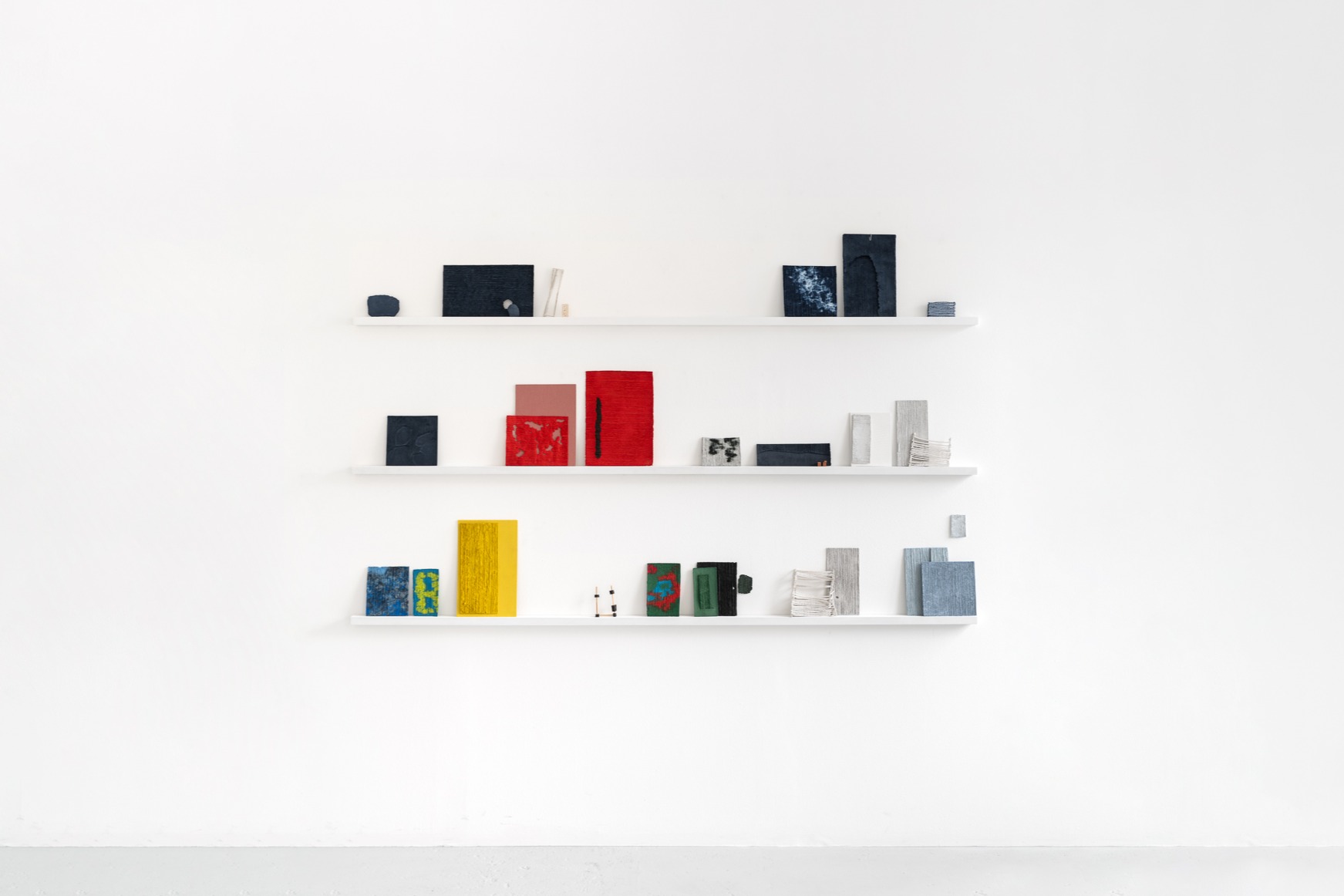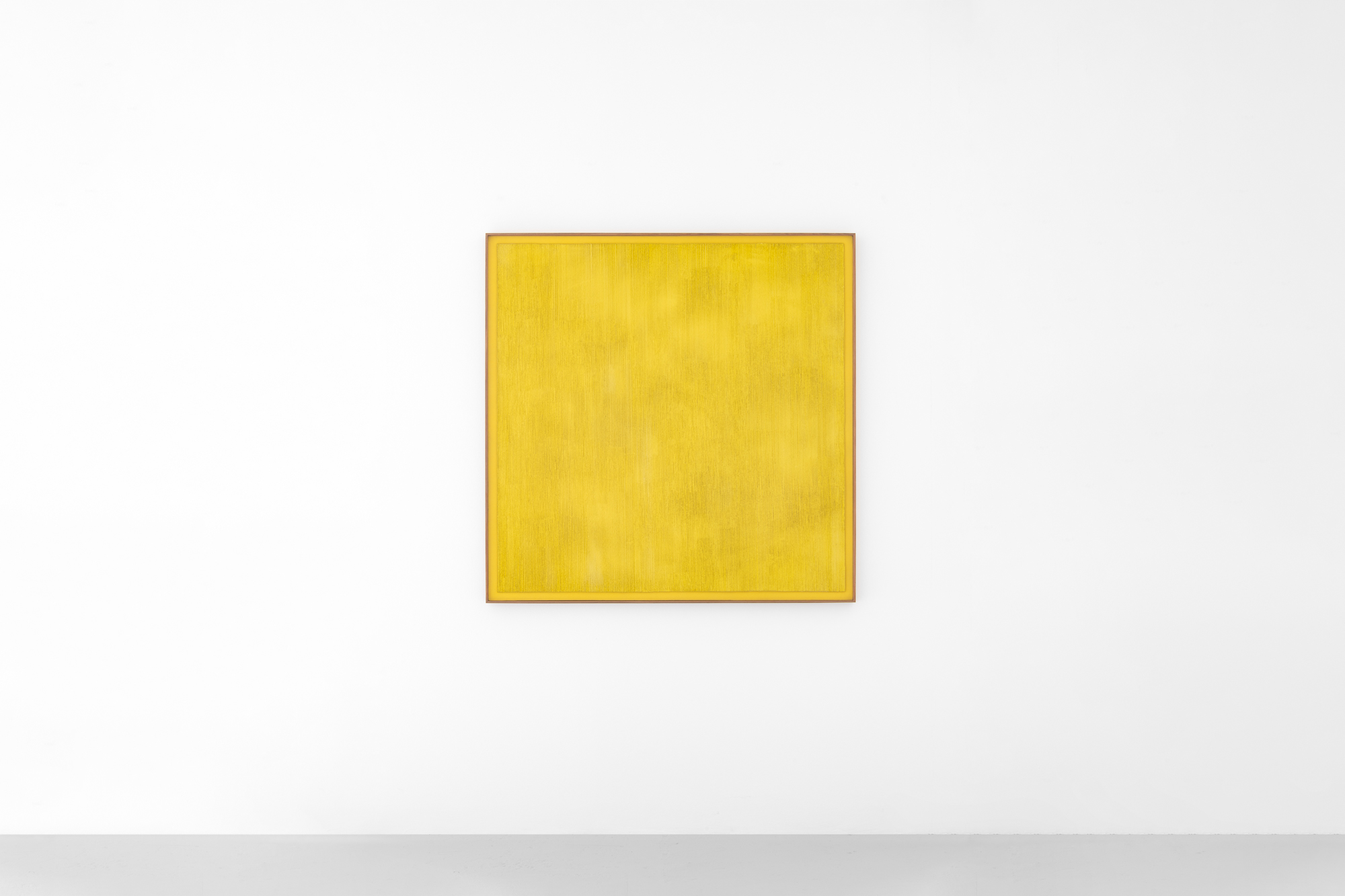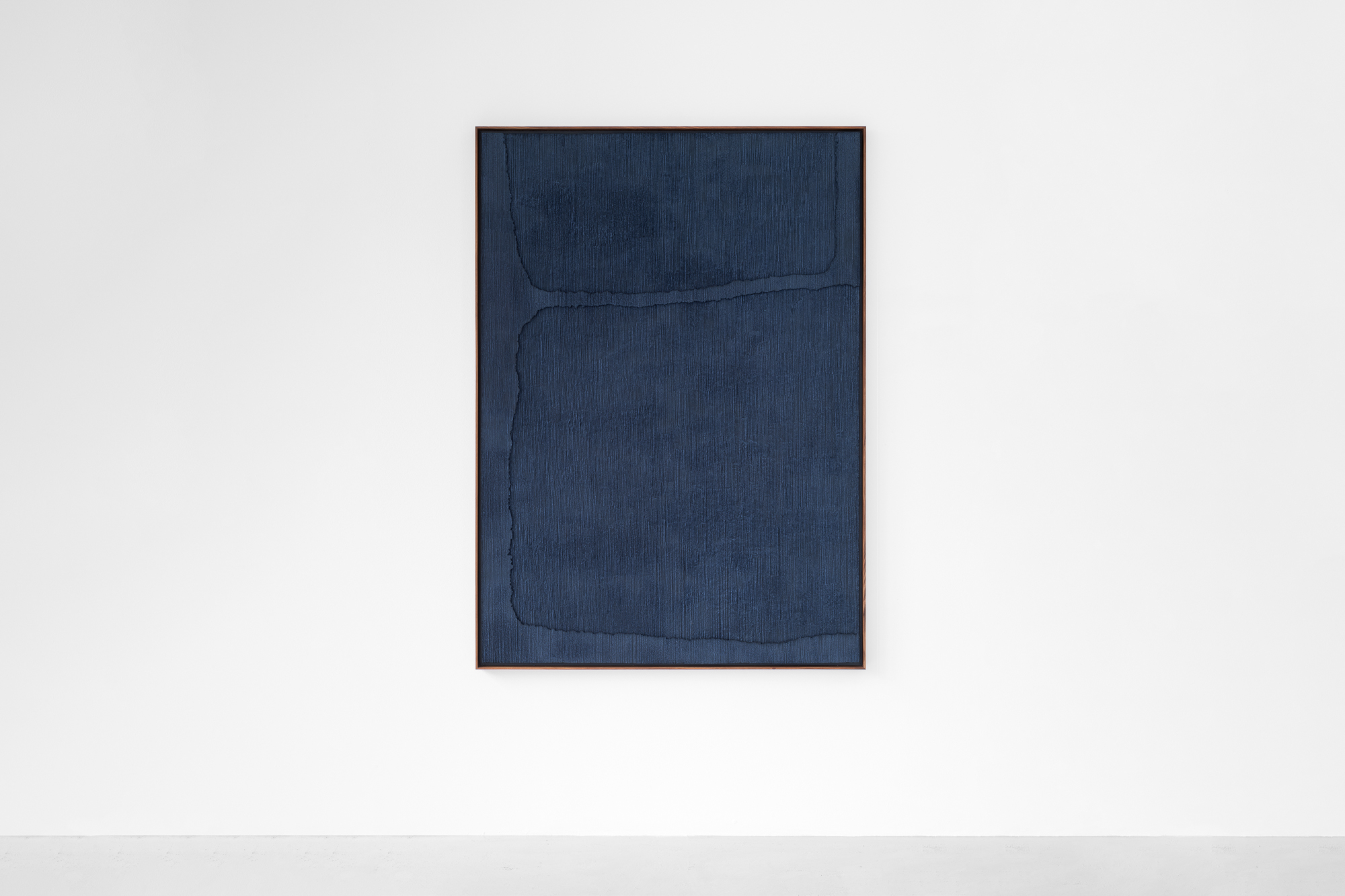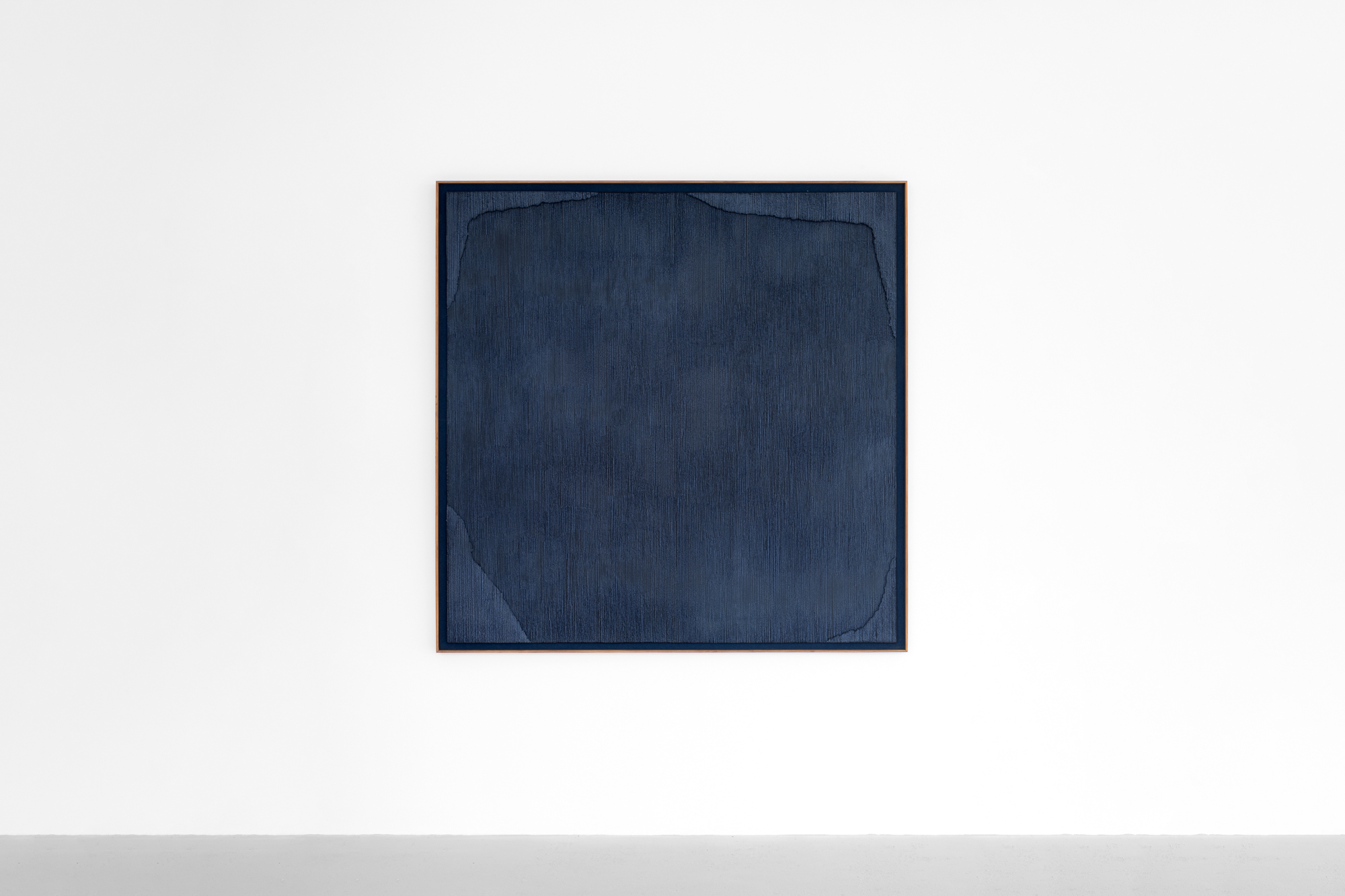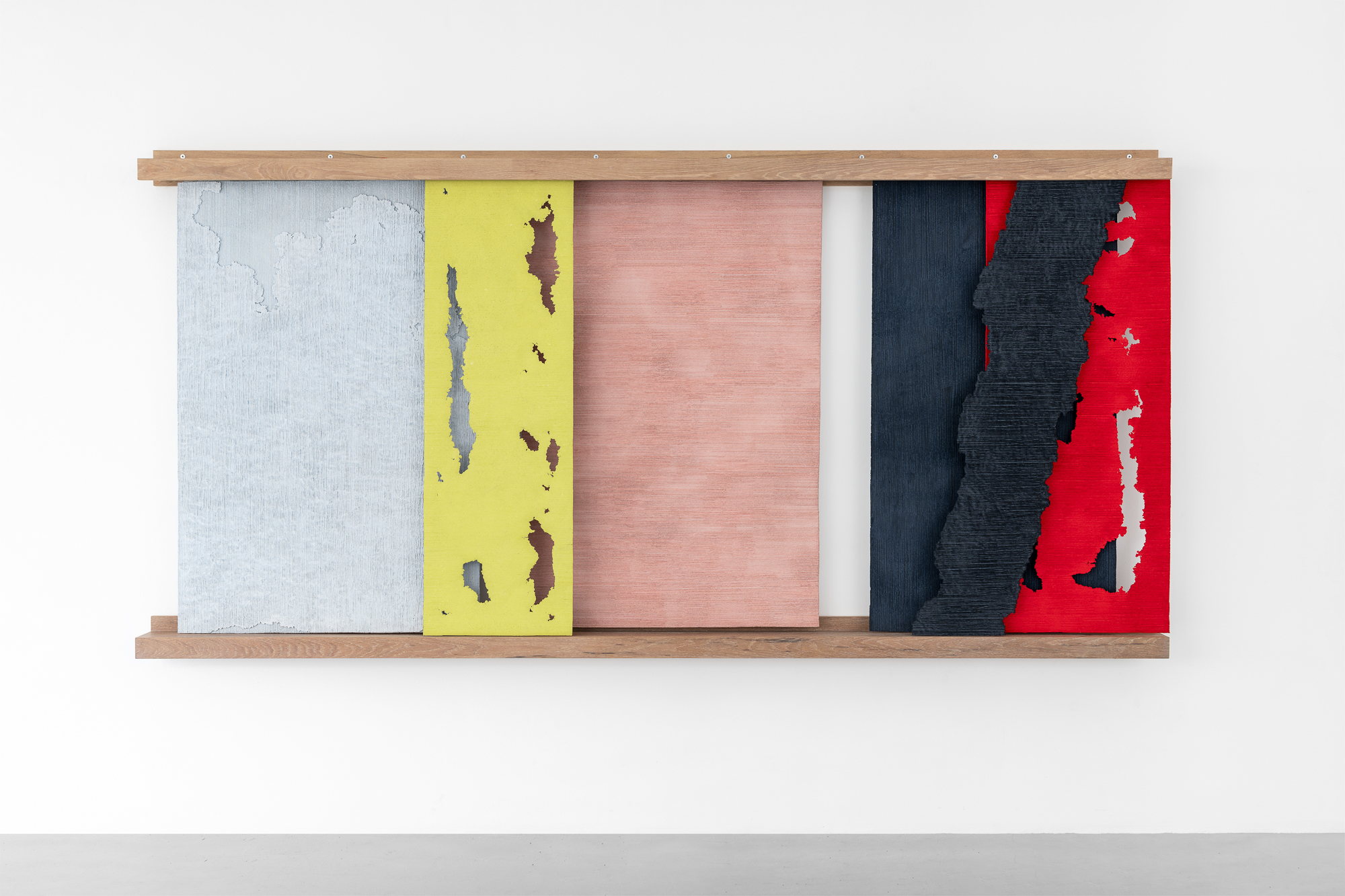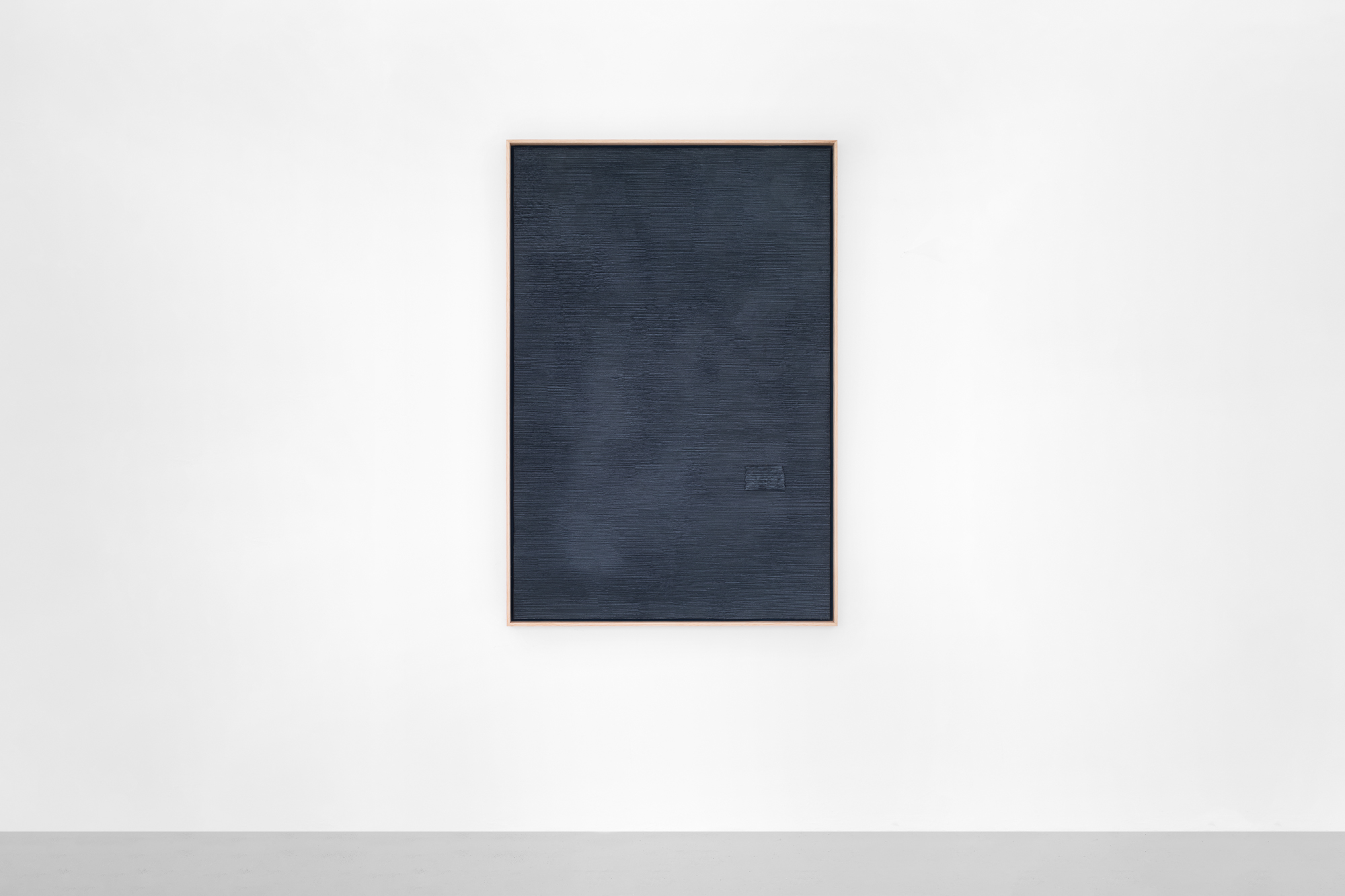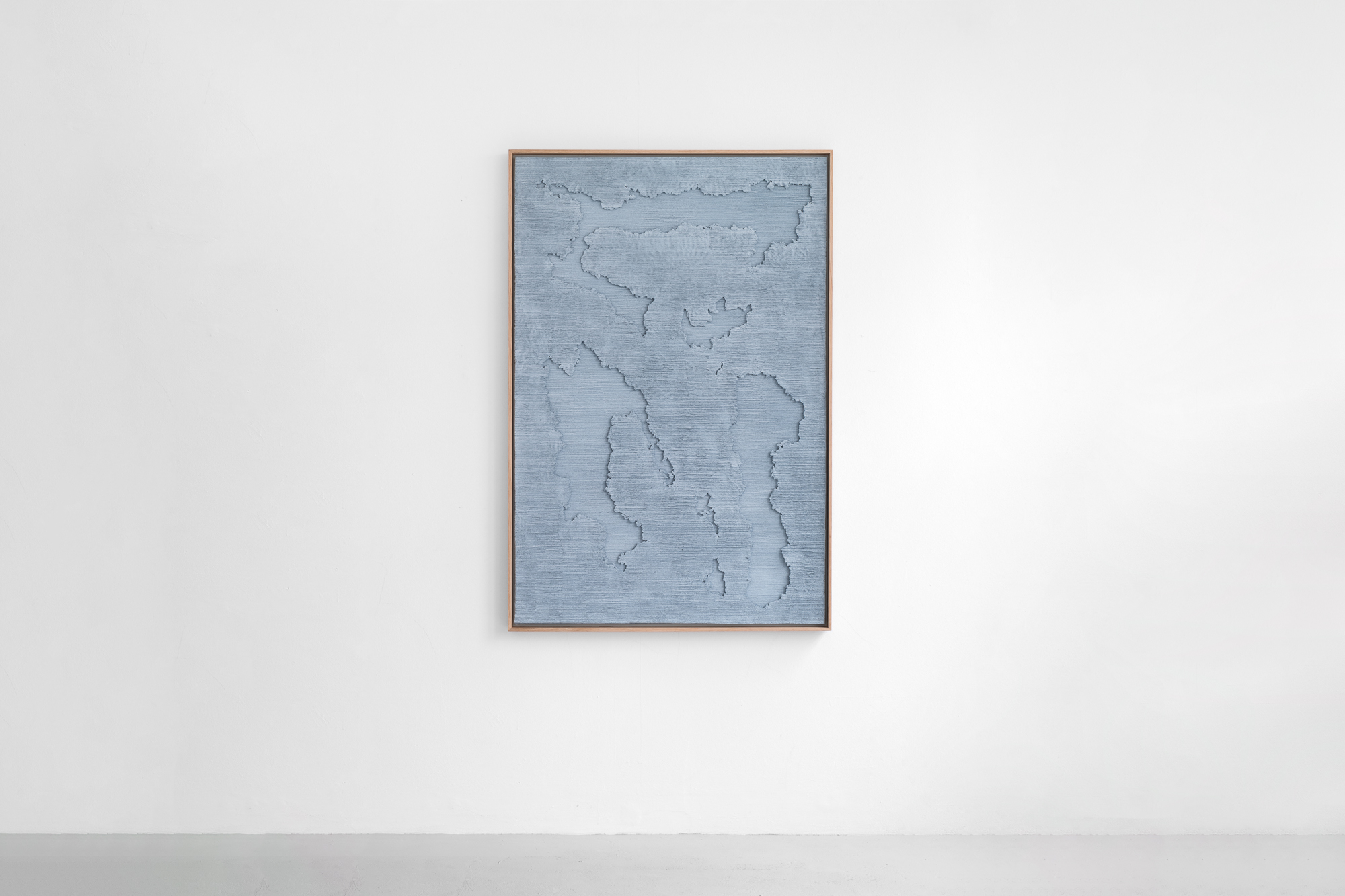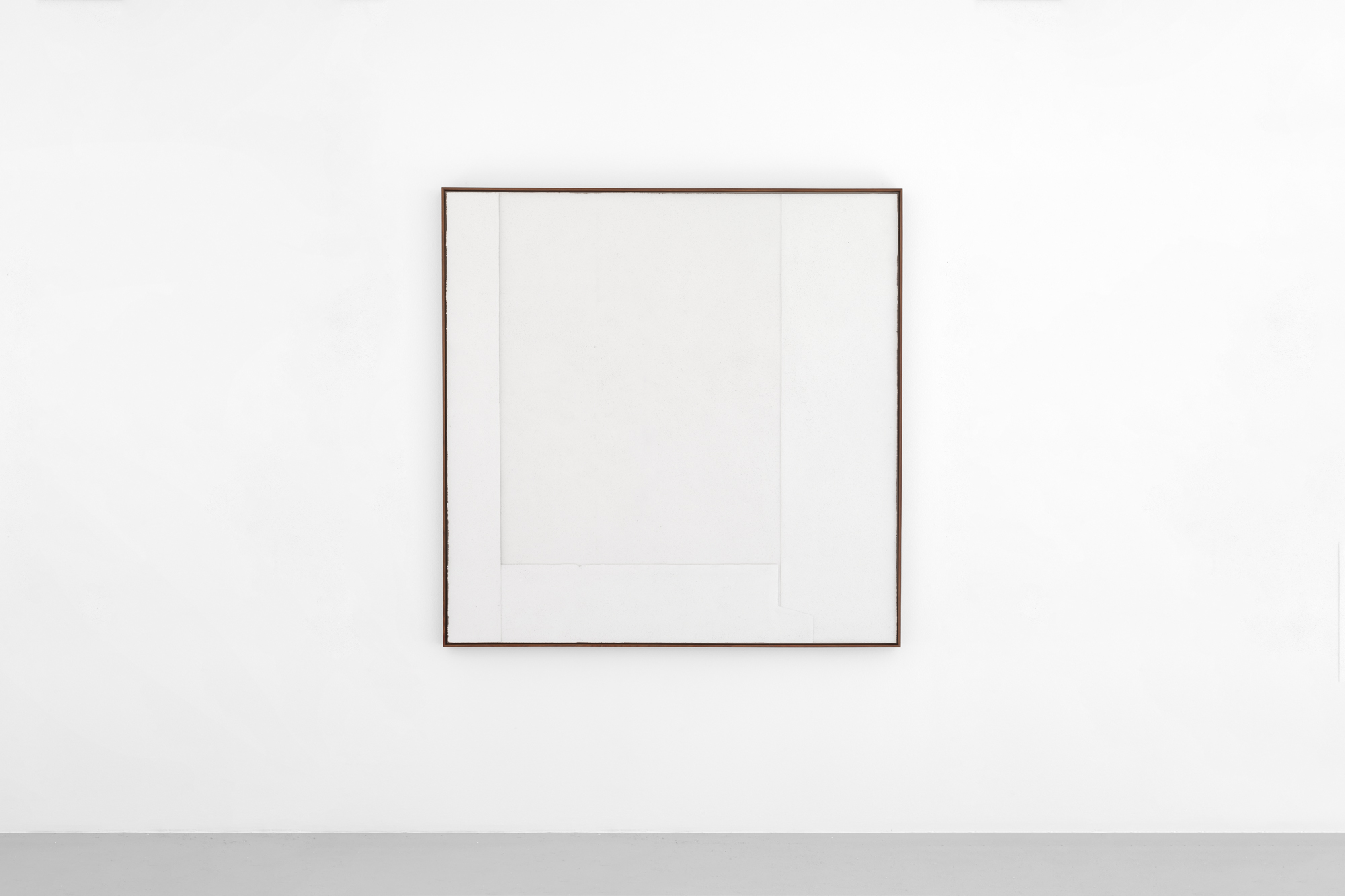Bella Knemeyer
Something about this place
06 October 2023
-
18 November 2023
Bella Knemeyer: Something about this place. RESERVOIR Projects. Photographer: Paris Brummer
RESERVOIR is pleased to present 'Something About This Place' by Bella Knemeyer (b. 1991, South Africa), the artist's debut solo exhibition. Opening on 06 October 2023, 'Something about this place' will be on show until 18 November 2023.
The exhibition is composed of a suite of seven paper-based works and a related installation of small maquettes that together consolidate various formal and procedural aspects of Knemeyer’s materially diverse sculptural practice from the last decade. Trained as a sculptor, Knemeyer’s earliest works included sculptural installations and assemblies made from concrete, tar, mild-steel and glass. She has since explored using clay and papier-mâché in sculptural form. The new paper-based works presented in Something About This Place are the culmination of more than two years of creative experimentation with mulched paper in her Simon’s Town studio. Knemeyer’s earliest paper works were made with toilet paper, a fragile but abundant source material. In 2022 she started using discarded papers sourced at a municipal dumpsite. All the works in Something About This Place were made from a pungent mulch of discarded papers, colour pigments and binding agent. Knemeyer’s new works boldly assert obsolete paper’s utility as a durable sculptural material that is also capable of addressing – abstractly, without indictment – social issues and values. In the main, her works present without any discernable reference or icon. But for two works, Between Holes 8 And 10, Past The Two Palm Trees and A Stone from Nukain’s Garden (all works 2023), which portray the silhouettes of socially and culturally resonant stones, all Knemeyer’s works are abstract. Nothing is overtly declared. Much of what interests and upsets Knemeyer as an artist and co-inhabitant of a damaged planet is sublimated in the conspicuously rippled fields of monochrome colour. This strategy of sublimation necessarily emphasises her use of colour. Knemeyer’s colours often refer to highly specific events and situations recorded in photos on her studio wall. A Burning MyCiti bus. An ice core sample that will reveal atmospheric gases close to a million years ago. Scenes of trouble and planetary undoing, each capable of suggesting a colour. It is not necessary to inventory each colour and its reference point. A single example, yellow, suffices. “Yellow is such an Anthropocene colour,” says Knemeyer. “It is life giving and full of decay, acidic and rancid. It is the colour of wild flowers and sulphur, which is industrially mined under appalling labour conditions and generates large amounts of wastewater when treated. Yellow holds all the contradiction of now.” In an ambitious new work, Wish You Were Here, Wish Here Was Better (2023), Knemeyer expands her repertoire of paper-based forms by overlapping six irregularly shaped masses of colour in an installation. The sliding system loosely riffs on an early cement work, And Again (2015), included in a Johannesburg exhibition. Knemeyer’s new work invites endless reconfiguration. No combination is right. Colour trumps form in Knemeyer’s paper-based works; indeed, colour is form in her energised and worn fields of yellow, blue, red, blue and grey. Colour, always a primary value in Knemeyer’s work, persists. The rippled surfaces of Knemeyer’s paper works are linked to earlier experiments with clay. Knemeyer likens them to the raked marks of a Zen garden and agricultural landscapes, although, procedurally, they are derived very differently. Knemeyer recalls a piece of counsel she received from sculptor Jane Alexander, her lecturer in art school, of sitting with the medium, and moving between thinking and doing." Knemeyer often sits with her material for long chunks of time. The analogue process of making her paper works requires it. She begins by spreading wet mulch across a table with a trowel. Knemeyer uses a modified steel ruler to imprint – slowly and repeatedly, for hours at a time – line after line into the wet surface. And then she waits for the mulch to dry, for her work to achieve sculptural rigidity. The making process, while operationally quite simple, involves endless colour tests using different formulations of colour pigment to tonally animate the corrugations and tensions at the surface of her work in the right way. Those grooves and pressure points are metonyms for real-world pressures and strains. Knemeyer, formerly a researcher at the African Centre for Cities at the University of Cape Town, is deeply occupied with how human environments operate, with how things are made, pulled apart, repaired and metabolised, also how they are remembered and actively unremembered. Her practice explores how repair and remembering can be achieved in art making, how making itself can operate as a form of repair and memory work. Process and concept are intimately linked. Most of the works in Something About This Place were made with discarded papers found at a municipal dumpsite near the artist’s studio. The paper is a vital actant, as opposed to constituent material for a recipe. Obsolete paper is an abundant resource that, importantly for Knemeyer, is also a non-primary material. “I think there is an obligation as a maker to think more carefully around materials,” says Knemeyer, who nonetheless feels it is unnecessary to explicitly figure this ethical value in her work. Differently put, her ethics are directed or channelled – in a word, sublimated – into her choice of material, discarded paper. This paper is plainly visible, if not fully legible. Among the papers transformed by Knemeyer into a wet mulch over the past year are a 1970s car manual, a stack of student apology letters addressed to a revered in Fishhoek, copies of a 2021 tide timetable for Simon’s Town, annotated cash-up sheets for Marvel Bar on Long Street from 2013, also cheques and client remittances for a security company based in Sea Point that extend back as far as 1990. The work in the Something About This Place include the cash-up sheets, cheques and apology letters, as well as Lotto tickets, sheet music and papers from a blue folder containing the life history of a single Mazda. This diverse and ephemeral archive of papers speaks to the exigencies of capitalist hustle and everyday doing in Cape Town over the past half century. But, and this is crucial, whatever sociological insights the archive of papers holds – be it English as the lingua franca of commerce, or the emergence of domestic security as robust industry in white suburbia in the 1990s – is channelled into the materiality of Knemeyer’s work. Nothing is overtly declared. Like Knemeyer’s admiration of eco-feminist Donna Haraway, a limber thinker concerned with ethics and post-humanist consciousness on a damaged earth. Writing in her book Staying With The Trouble (2016), Haraway speaks of the need to foster odd kinships and “unexpected collaborations and combinations, in hot compost piles”. Knemeyer’s work is ideationally as well as practically wed to this idea. Research and practice are inextricable for Knemeyer. “You have to think through your hands,” she says. Thinking with her hands, Knemeyer has developed a method composting her found papers into a semiotic material that binds together her interest in embodied research, human archives and material flows. We are all enabled by material flows, daily, our here connected with everywhere. Knemeyer’s interest in this expansive field of business doing and academic research is, however, particular and framed by her interest in landscape, its occupation and settlement, the building that happens on it, and – this being South Africa – the contest and trauma that surrounds it, the disremembering too. The work Between Holes 8 And 10, Past The Two Palm Trees depicts the silhouette of a cobble stone, building rubble, from District Six that was deposited on marshland in Milnerton, and now a golf course. The title quotes a description by a man Knemeyer spoke with when she visited the site to verify a rumour. This detail too is sublimated, rendered invisible through an idiosyncratic process, but it is not lost, not forgotten. It lingers, there at the surface of Knemeyer’s work about repair and remembering. Text by Sean O'Toole

